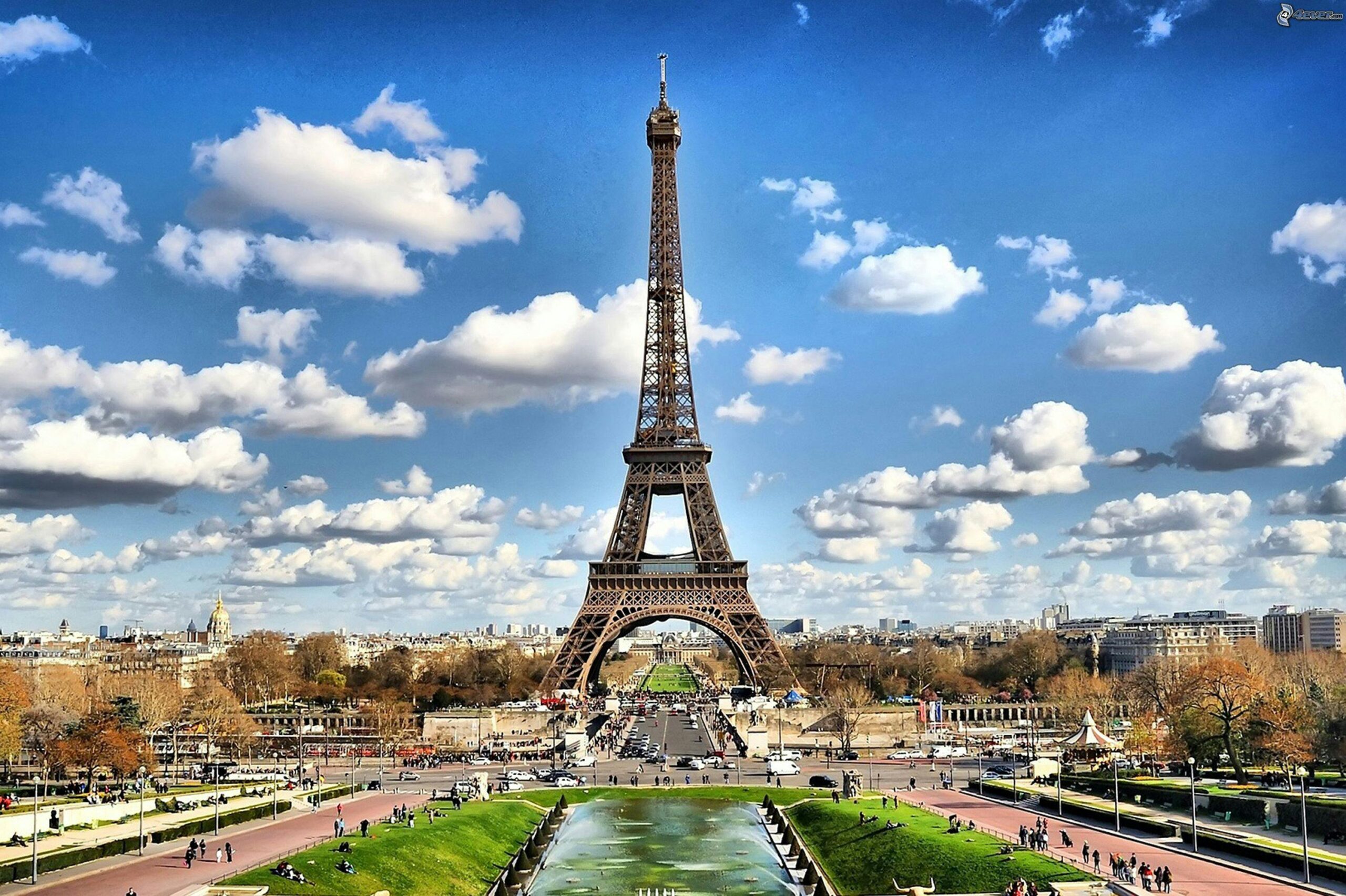Map of Paris Transformed Into a Cleaner, Greener City-All Achieved in Just 16 Years

Sixteen years ago, Paris was a city dominated by cars. Horns blared. Exhaust filled the air. Streets belonged to traffic, not people. But today? Walk through the heart of the French capital, and you’ll notice something different. The air is cleaner. The streets are quieter. Cyclists glide past where cars once clogged the roads.
Paris has reimagined itself—not with small tweaks, but with bold, sweeping changes that make it a model for sustainable cities worldwide. This isn’t just about adding a few trees or tweaking traffic rules. It’s about transforming how an entire city moves, breathes, and connects.
How did Paris pull this off while still keeping its legendary charm? And more importantly—what can other cities (and individuals) learn from it?
Decisive Action on Vehicle Reduction

Paris made a choice—a bold one. Instead of letting cars dictate city life, it took back the streets. Over the years, the city has cut vehicle traffic by 40%, proving that even the busiest capitals can break free from car dependency.
But how? It wasn’t just about slapping on restrictions. Paris took a smarter approach—one that made walking, biking, and public transit the easier, more appealing choice.
First, the city hit drivers where it mattered: strict emissions policies, higher parking fees, and incentives for electric cars. But the real game-changer? Events like Car-Free Day, when entire streets turned into pedestrian zones, giving Parisians a glimpse of a city where people—not cars—came first. That one day shifted public perception. It showed how peaceful and enjoyable Paris could be without the constant hum of engines.
On top of that, electric vehicle infrastructure exploded across the city. Charging stations popped up everywhere. Electric taxis became the norm. The message was clear: If you’re going to drive, make it green.
And the results? Paris breathes easier. Air pollution is dropping. Traffic jams are shrinking. Sidewalk cafés, once drowned in noise, now buzz with conversation instead of honking horns. It’s not just about cutting cars—it’s about giving the city back to the people.
Boosting Eco-Friendly Transport Options

Paris didn’t just push cars out—it pulled people toward greener ways to move. And it did it brilliantly.
Over 1,000 kilometers of bike lanes now weave through the city, making it one of the most bike-friendly places in the world. But these aren’t just random lanes painted onto roads. They’re safe, connected, and built for real commuters. Want to ride past the Seine? Glide through historic neighborhoods? It’s all there.
To make cycling even easier, Paris introduced Vélib’, a low-cost bike rental system that put two wheels within reach of everyone. Whether you’re a local heading to work or a tourist exploring the Eiffel Tower, hopping on a bike is often the fastest and most convenient option.
Public transport also got a major eco-upgrade. New metro lines stretch deeper into the city, cutting commute times and easing congestion. Buses and trams switched to cleaner energy sources like electricity and biofuels, slashing urban emissions.
The shift is undeniable. More people bike. More people take public transit. Fewer people rely on cars. The streets of Paris feel different—lighter, freer, more alive.
Green Spaces and Urban Biodiversity
Look around Paris today, and you’ll see something unexpected—not just historic buildings, but nature woven into the city’s fabric. Parks, rooftop gardens, vertical green walls—Paris has transformed concrete into living, breathing spaces.
The city didn’t just add a few flower beds. It reimagined entire areas. Old, forgotten spaces—like abandoned railway lines—were turned into lush walkways. The Petite Ceinture, once an unused rail route, is now a peaceful green escape, filled with native plants and buzzing with life.
And it doesn’t stop at ground level. Paris is growing upwards. Vertical gardens climb the sides of buildings, filtering pollution and cooling the city. Rooftop farms bring fresh produce to urban neighborhoods, proving that sustainability isn’t just about beauty—it’s about function, too.
These efforts don’t just make Paris prettier. They fight pollution, reduce heat, and bring biodiversity back to the city. Birds, bees, and butterflies—once pushed out by urban sprawl—are returning, creating a healthier, more balanced ecosystem.
Innovative Environmental Policies
Paris didn’t just talk about sustainability—it built it into the city’s DNA. From energy-efficient buildings to cutting-edge waste management, every policy pushed the city closer to a cleaner, greener future.
Smarter, greener buildings.
Paris made a simple rule: If a building gets a facelift, it has to meet strict energy-efficiency standards. That means better insulation, solar panels, and even geothermal heating. New buildings don’t just meet the standards—they set them. The result? Less energy waste, lower emissions, and a city that runs smarter.
Waste? Think again.
Landfills aren’t the answer—innovation is. Paris doubled down on recycling, composting, and waste reduction. Community-led composting programs popped up across neighborhoods, turning food scraps into fuel for city gardens. Local recycling centers made it easier than ever to cut waste. Paris isn’t just throwing less away—it’s rethinking what waste even means.
Revolutionizing transportation.
Paris isn’t waiting for the future—it’s building it. The city set ambitious goals to phase out gas-powered cars, pouring investments into electric buses, bike-sharing, and EV charging stations. The plan? Make it easier to go green than to drive dirty.
These policies aren’t just about the environment—they’re about how people live. Cleaner air. Less waste. Smarter cities. Paris is proving that policy isn’t just paperwork—it’s power.

Power to the People: How Parisians Are Driving Change
A city doesn’t change unless its people do. Paris didn’t just roll out policies and hope for the best—it put the power in the hands of its residents.
One of the most powerful tools? Participatory budgeting. Imagine having a say in how your city spends its money. In Paris, residents can propose and vote on projects that shape their neighborhoods. That’s how new parks, community gardens, and sustainability initiatives came to life—not from top-down mandates, but from people who care.
But engagement goes beyond voting. Parisians are learning, building, and taking action. Workshops on urban gardening, sustainable food practices, and energy conservation give people the skills to make a real difference. Schools and community centers have become hubs of knowledge, turning sustainability from a buzzword into a lifestyle.
And then there’s action. Every year, thousands join Clean Up Days, removing litter from public spaces. Green Week turns awareness into action with events, talks, and hands-on experiences. These aren’t just feel-good initiatives—they’re shaping a new culture, where people see themselves as stewards of their city, not just spectators.
A Blueprint for Urban Sustainability
A walk through Paris today feels different. Streets once filled with honking cars now hum with the sound of cyclists and conversation. Sidewalk cafés are no longer drowned out by traffic. The air is cleaner. The pace of life feels lighter. None of this happened by accident.
Paris made a decision. It rethought the way a city should function—not just for efficiency, but for the people who live there. Over the years, it replaced congestion with connection, pollution with progress. It proved that urban life doesn’t have to be built around cars and concrete. It can be designed for movement, for nature, for well-being.
This shift didn’t just change the city—it challenged the norm. If a major global capital can take back its streets, rethink transportation, and prioritize sustainability, why can’t others? Why shouldn’t they?
Paris has rewritten its future. The question now is: Who’s next?
Featured Image Source: Pexels
Loading...






